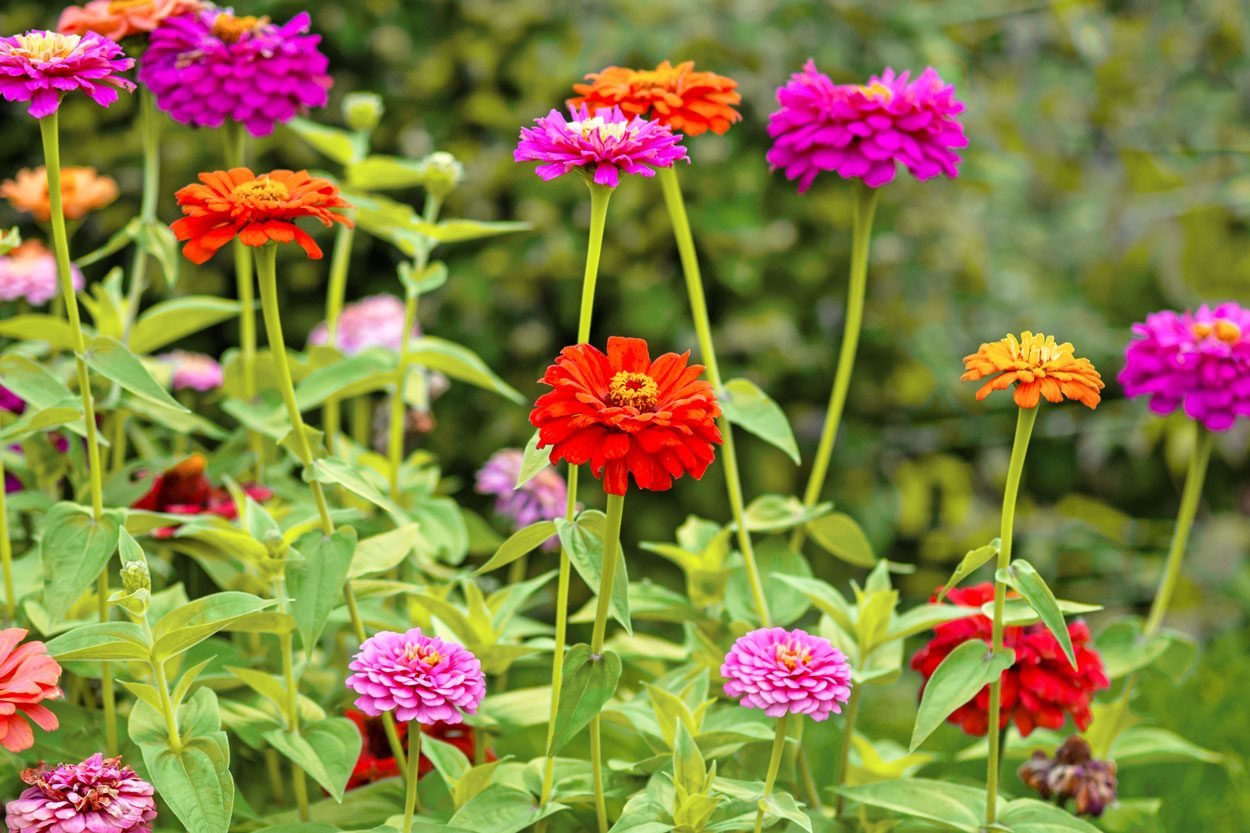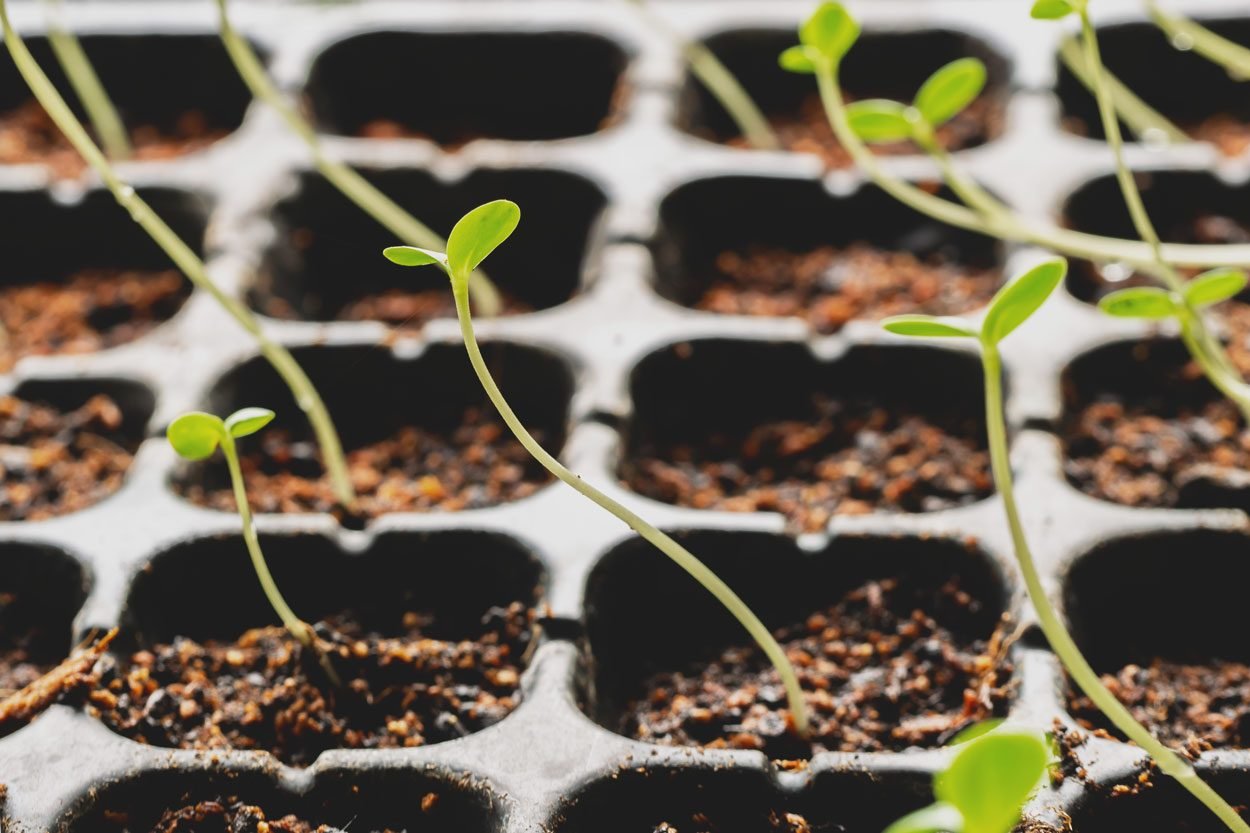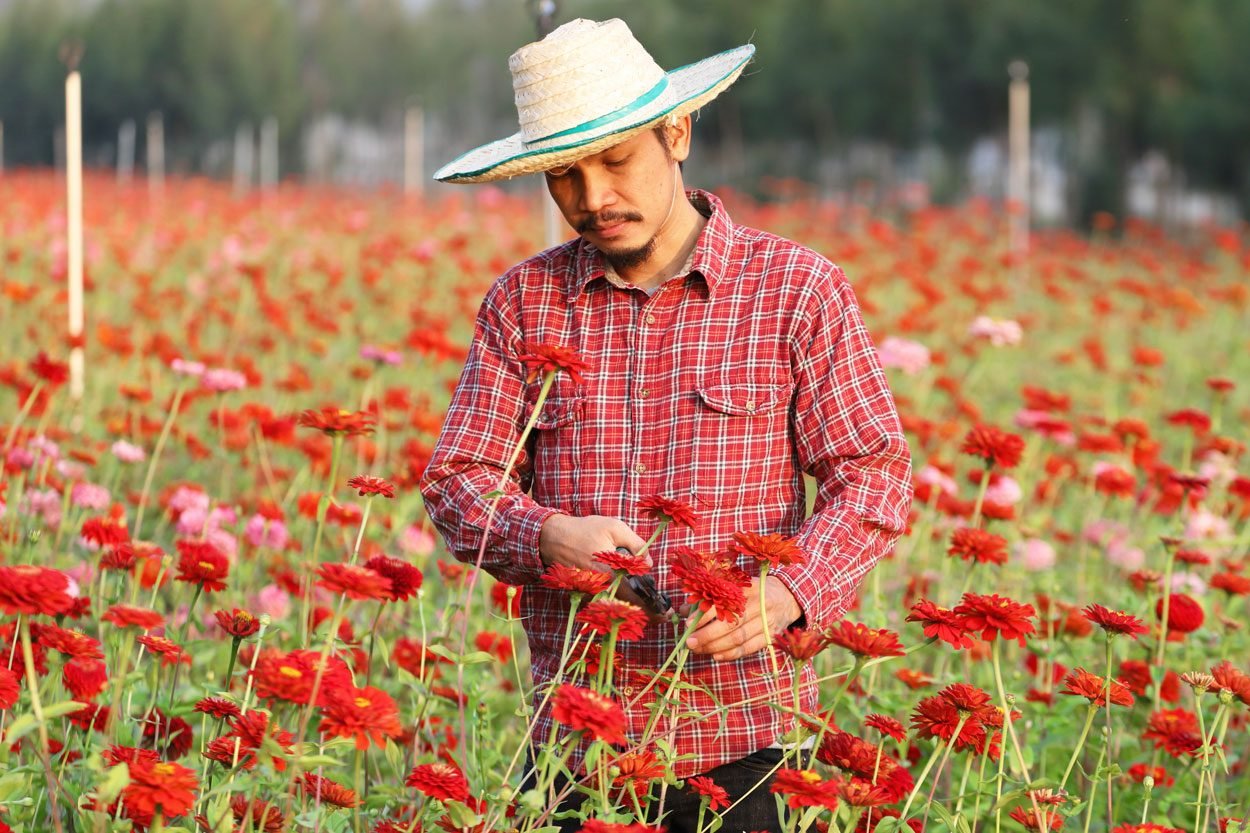When I showed a friend the zinnias growing around my mailbox, he didn’t recognize them as zinnias because they were only about eight inches tall and covered with bright yellow flowers. Then I showed him the zinnias growing in a long row in my vegetable garden, and he recognized those. They were blooming in many colors and some were nearly three feet tall. Zinnias are versatile in the garden and make beautiful cut-flower bouquets indoors.
Are Zinnias Perennial?
Zinnias are annual flowers. Most of the zinnias we grow today originated from Zinnia elegans, which is native to Mexico. They grow, flower and set seed in one season, and do not tolerate any frost. In some areas, especially warmer areas, if you allow zinnia seeds to drop to the ground, you may get volunteer seedlings coming up the following spring.
Types of Zinnias

There are several types of zinnias and within those types, there are many varieties. They all grow best in well-drained soil and full sun.
Zinnia elegans
Most of the zinnias we buy to direct sow in the garden are varieties of Zinnia elegans. They are often two to three feet tall and come in both double and single flower forms. A few of my favorites are:
- State Fair Mix grows up to three feet tall and has big flowers, some measuring five inches across. You’ll get red, pink, yellow and orange flowers out of one packet of seeds.
- Queen Red Lime and Queen Lime Orange both have striking bi-color blooms and grow at least three feet tall.
- Candy Cane Mix has flowers with red stripes and flecks on the petals.
Zinnia angustifolia
Growing just eight inches tall with a spread of about 12 inches, these small zinnias are covered with 1-in. blooms and will keep flowering all the way until frost. The most popular varieties of this type of zinnia are the Crystal Series, which come in yellow and white.
Hybrid zinnias
Hybrid zinnias include the popular Profusion zinnias that grow 12 to 18 inches tall and keep blooming throughout the summer. They come in many flower colors and are ideal for containers. Another popular variety of hybrid zinnias is the Zahara series.
Starting Zinnias From Seed

Zinnias are very easy to grow from seed.
Sowing outdoors
Zinnias, especially Zinnia elegans, are easy to start from seed directly in the garden and actually do better when sown where they will grow.
Once your garden is frost-free in spring and the soil has warmed, cultivate the soil where you plan to grow the zinnias in a location with full sun and good drainage. Sow seeds three to four inches apart, covering with about one-quarter inch of soil. Water them with a light spray so you don’t disturb them. Once seedlings come up, thin them out to be eight to 16 inches apart to allow for airflow around the plants.
Sowing indoors
To give smaller types of zinnias a head start, you can sow them indoors six to eight weeks before your last frost. Sow seeds for hybrid zinnias and Zinnia angustifolia in small individual containers in a general seed starting mix, covering them until they germinate, then grow them under lights before hardening them off and planting them in containers or in the ground outside after your garden is frost-free.
How To Care for Zinnias

Watering
Zinnias can tolerate periods of dry weather once established so you may only need to give them extra water earlier in summer if you have dry stretches with less the one inch of rain a week.
Fertilizing
You may wish to fertilize your zinnias if you are unsure of how fertile your soil is or if you are growing zinnias in containers. Use a general-purpose liquid fertilizer or one labeled for flowering plants. Follow the instructions on the label for how much fertilizer to apply.
Deadheading
If you grow the tall Zinnia elegans type of zinnias, cut blooms as they open to enjoy in bouquets indoors. Otherwise, deadhead flowers as they fade. If you plan to save seeds, which many people do, let the last of the flowers stay and form seeds that you can gather at the end of the season.
Zinnia angustifolia and the hybrid zinnias will continue to bloom without deadheading but as the season goes on, may slow down a bit. At that time, removing older blooms will encourage them to keep flowering until frost.
Controlling pests
One of the worst insect pests of zinnias are Japanese beetles. Because zinnias also attract many bees and butterflies, use biological controls for the Japanese beetles to avoid harming the pollinators.
Another common problem with some types of zinnias is powdery mildew, which shows up late in the summer. Generally, the powdery mildew doesn’t kill the plants. Your best hope to control its spread is by spacing plants out to allow for plenty of airflow around them, avoiding spraying water directly on leaves when watering and putting powdery-mildewed plants in the trash instead of a compost pile.
Did you miss our previous article...
https://rsssuperfeeds.com/life-hacks/what-you-need-to-know-about-lowvoc-and-novoc-paint






